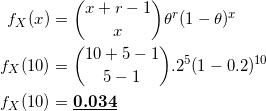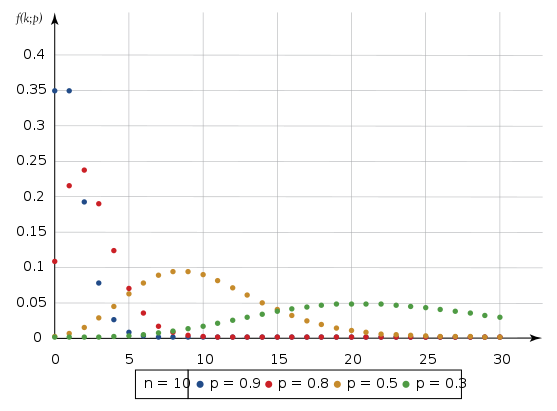Introduction
Negative Binomial Distribution (also known as Pascal Distribution) should satisfy the following conditions;
- The experiment should consist of a sequence of independent trials.
- Each trial should have only 2 outcomes. That is Success (S) or Failure (F).
- Success Probability θ should be constant from trial to trial.
- The experiment should be continued until the occurrence of r total successes. Here r is a specified positive integer.
In the Binomial Distribution, we were interested in the number of Successes in n number of trials. But in the Negative Binomial Distribution, we are interested in the number of Failures in n number of trials. This is why the prefix “Negative” is there.
Differences between Binomial Random Variable and Negative Binomial Random Variable
| Negative Binomial Random Variable | Negative Binomial Random Variable |
|---|---|
| Fixed No. of trials. | Trials are not fixed, random. |
| No. of successes is not fixed. | No. of failures are fixed. |
Detailed Example – 1
Consider an experiment where we roll a die until the face 6 turns upwards two times.
Here;
- Our trials are independent. That means turning 6 face upwards on one trial does not affect whether or 6 face turns upwards on the next trials.
- Each trial only has 2 outcomes.
- Success probability is constant. 1/6 for every trial.
- The experiment is continued until the 6 face turns upwards 2 times.
Probability Distribution
X = Number of failures that precede the rth success.
(1) 
Terminology;
- x – value of the Random Variable X
- r – rth success. (no. of failures = (r-1))
- θ – Success probability
Detailed Example – 2
A researcher is interested in examining the relationship between students’ mental health and their exam marks. For this, he wishes to conduct interviews with 5 students.
θ = Probability of a randomly selected student agrees to sit for the interview
θ = 0.2
What is the probability that 15 students should be asked before 5 students are found to agree to sit for the interview?
(2) 
Expected Value and Variance
Expected number of trials until first success is;
(3) ![]()
Therefore, expected number of failures until first success is;
(4) ![]()
Hence, we expect ![]() failures before the rth success.
failures before the rth success.
Therefore,
(5) 
Geometric Distribution
This is a special case of Negative Binomial Distribution where r=1
That means, we are interested in finding number of trials that is required for a single success.
Example :
Tossing a coin until it lands on heads.
Formula
(6) 
References
- Probability and Statistics for Engineering and the Sciences 8th Edition by Jay. L. Devore
- https://stattrek.com/ – This site features very high quality statistics content!


